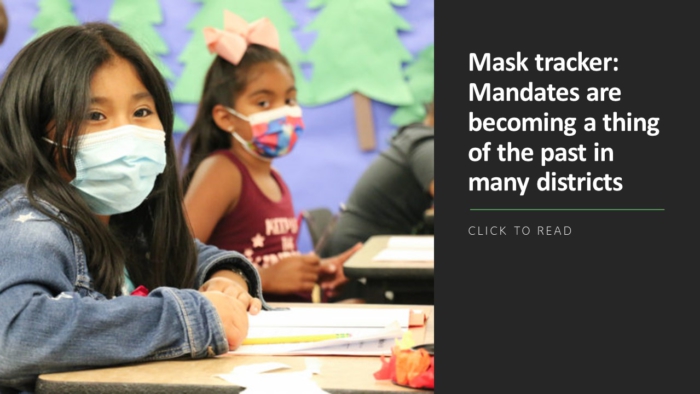Every time there is another school shooting, administrators whose buildings have suffered past attacks are forced to relive the worst day of their lives. For George Roberts, that was the first day of school in August 2012, when a student with a double-barreled shotgun shot another student in the back in the cafeteria of Perry Hall High School in Baltimore County, Maryland. The attack ended when the shooter, after firing two shots, was pinned to a vending machine by a teacher. The victim spent three months in the hospital, says Roberts, who was the school’s principal at the time.
Each time another school community is devastated, Roberts’ says his first emotion is anger. “Anger that it continues to happen, anger that as a country we don’t seem to be making strides to stem this, anger at the easy availability of weapons,” says Roberts, who is now an administrator in organizational development and leadership for Baltimore County Public Schools. “Then I go into support mode.”
Roberts offers that support as a member of the Principal Recovery Network (PRN), a team of current and former school leaders assembled by the National Association of Secondary School Principals to help guide building leaders in the immediate aftermath of shootings or other violence. “I go from anger to that sadness I felt 10 years ago, that I’m feeling for the community that is going through it now,” Roberts says.
Members of the network will reach out to a principal shortly after a shooting occurs to tell them what to expect (a lot of calls from the media) and help with decision-making (when to reopen school) in the days and weeks that follow the “most severe thing a school community can go through,” Roberts says. Members of the network first ask the principals how they are doing emotionally because communities will need strong leadership to cope with grief and anxiety. Principals are encouraged to lean on friends and family for support and seek counseling if necessary.
“A school may not be accessible because it’s a crime scene,” Robert says. “So decisions have to be made about how to educate children while it’s a crime scene, how to reopen, or how to reopen in an alternate location.”
Administrators are then encouraged to prioritize support for students and staff who were closest to the attack, such as those who may have had to barricade themselves in a classroom or closet. These individuals may have escaped physical injuries but they have likely suffered psychological damage, Roberts says.
Who do students trust?
Any number of things can trigger students and staff to relive the trauma of surviving a school shooting. Everything from the sound of a starting pistol at a track meet to the smell of the food that was being served the day of the shooting can reignite the panic, says Michael Sedlak, a Recovery Network member who was the assistant principal at Chardon High School in Ohio in 2012 when three students were killed, one was paralyzed and two more were wounded by a former student who attacked the cafeteria with a handgun.
More from DA: How many of your teachers want to quit? Depends what state you’re in
“The advice I give to school leaders is to talk to the students, the staff and the community to find out what they need, and make decisions based on that,” says Sedlak, who is now a unit principal at Hudson High School in Ohio’s Hudson City School District. “If you’re thinking of doing something for the students, run it by the students first.”
Having mental health counselors in the building and training teachers in trauma care will help when something triggers an adverse reaction in a student or staff member. Principals should also try to have substitutes ready at a moment’s notice if a teacher is struggling and has to step away from their classroom. “There’s so much to think about, I would recommend administrators not do it alone,” he says. “Use students and a staff as a resource.”
Back in 2012 in Baltimore County, Roberts received support from a former Tennessee principal who had experienced a school shooting a year before the attack on Columbine High School. Roberts gathered student leaders after the Perry Hall shooting to discuss what to do for the victims and how the school could move forward. That group decided to let the hundreds of students who were in the cafeteria at the time of the shooting paint a large mural on one of the walls. The mural is still there today, he adds.
The school also implemented a student ID system and check-ins for visitors when both of those practices were far less common than they are now. All school resources officers were given access to hand-held metal detectors to use when they suspected a student might be carrying a weapon. One of the most important steps he says he and his team took was to expand their student climate survey with a question about whether there was an adult in the building each student trusted. They also made a point of asking the same question face-to-face.
“Most school shooters will tell somebody what their plans are, not in full detail but they’ll give strong suggestions or hints,” Roberts says. “My shooter told two friends about his plan. So we tell students if they see it, say it. They will see it and say it if they trust who they’re saying it to.”
Therapy dogs were brought into Sedlak’s school to help students process their emotions after the shooting. These kinds of activities can rebuild a sense of comfort in the building. “The goal is to create new, positive memories in a spot where something tragic happened,” he says. “The tragic event will have always happened there, but it’s about the other new great things that can also happen there.”









